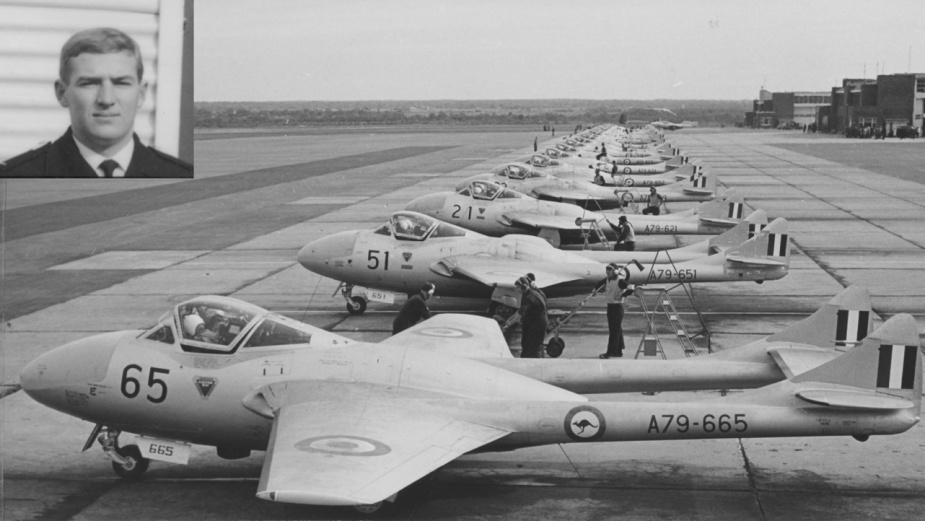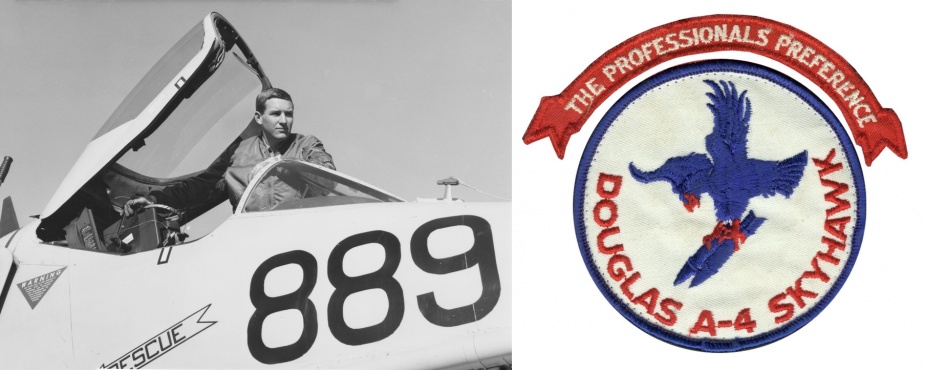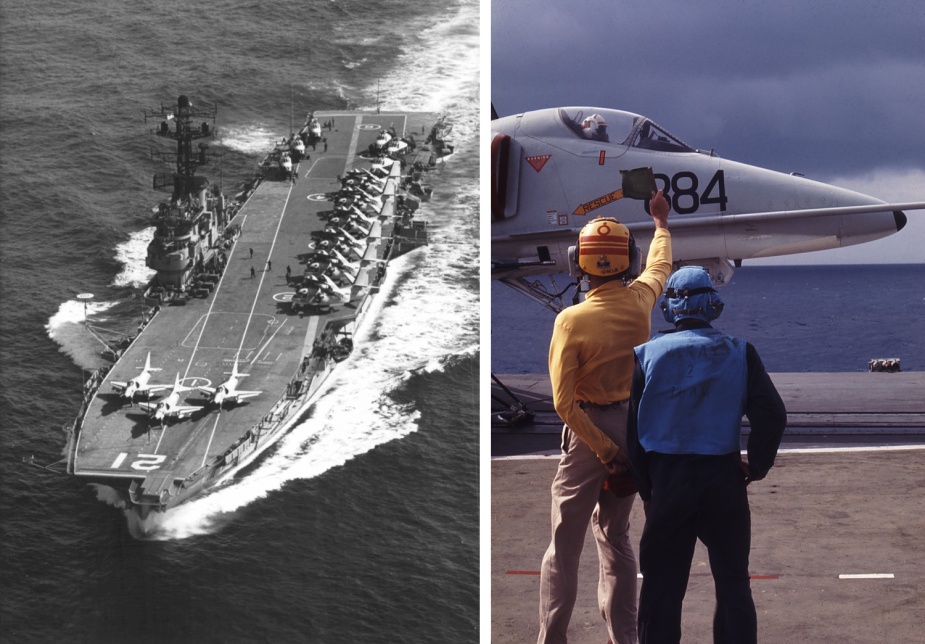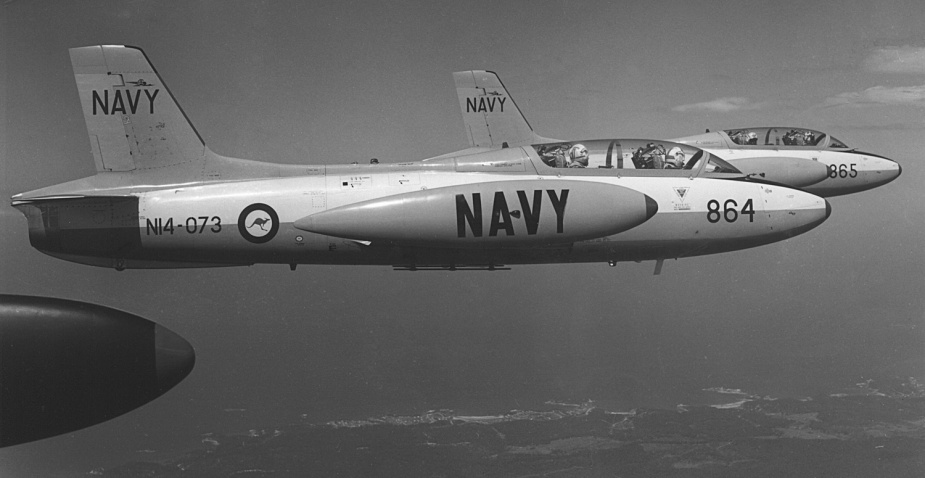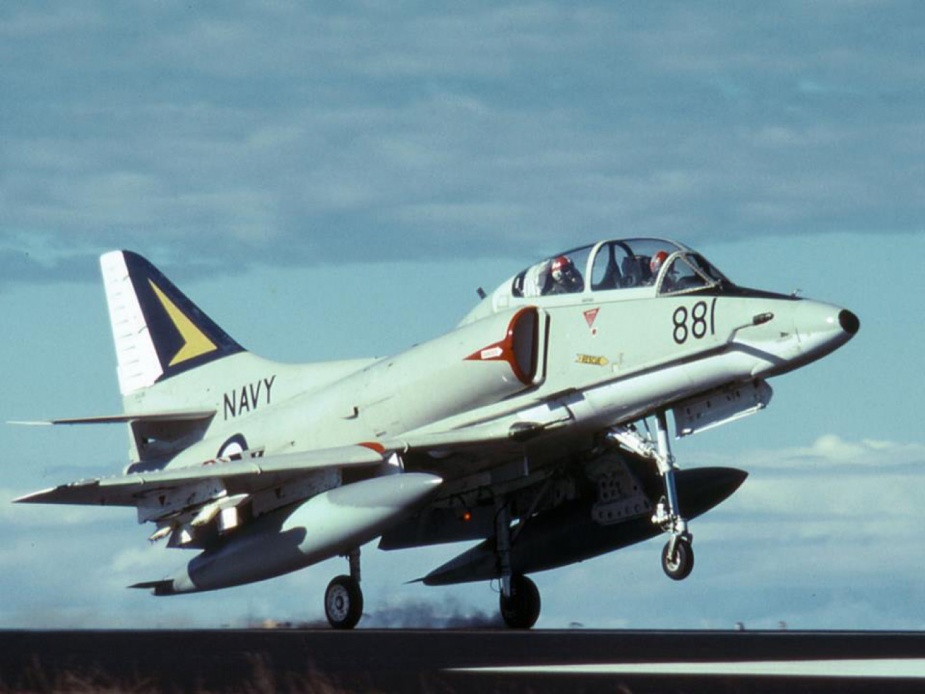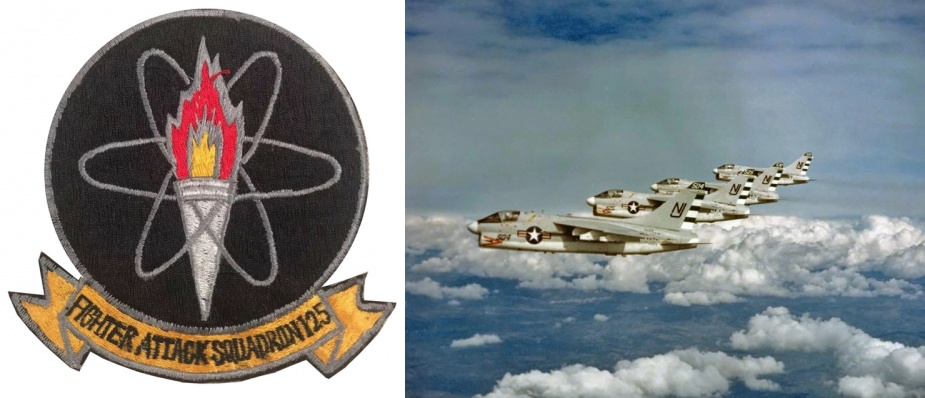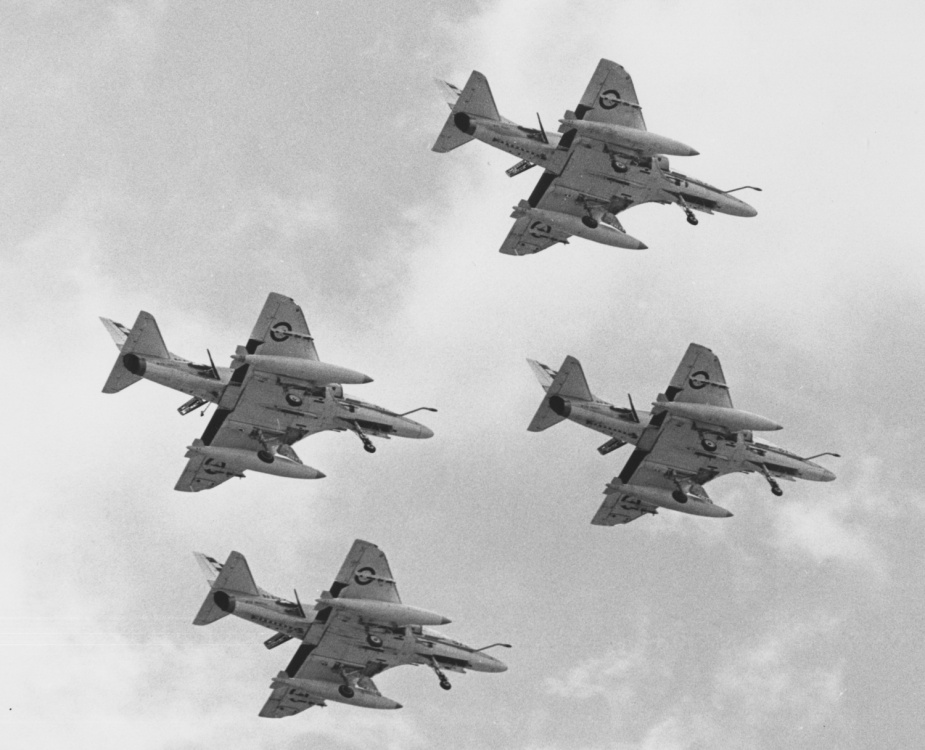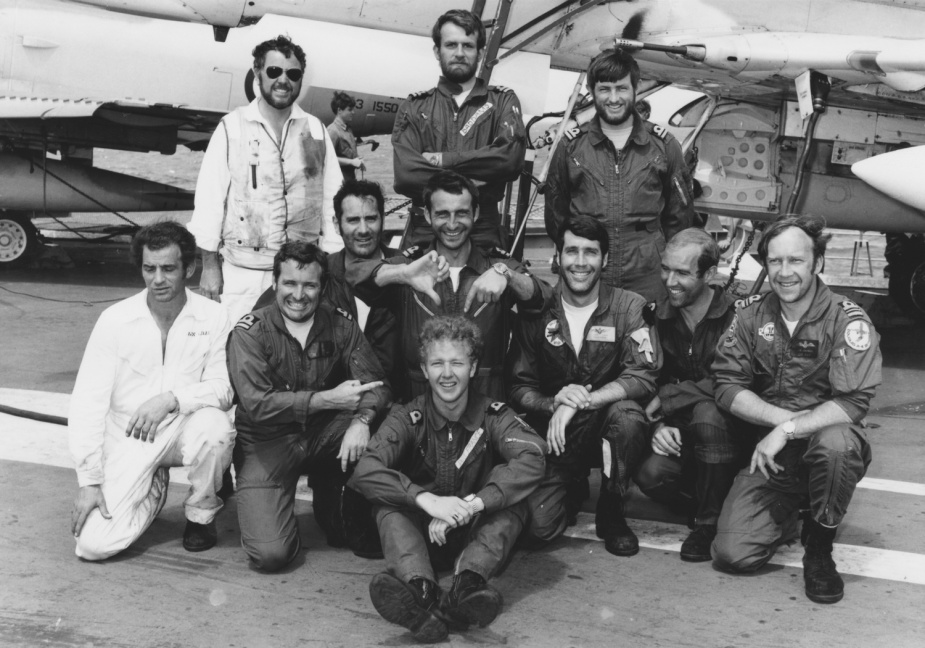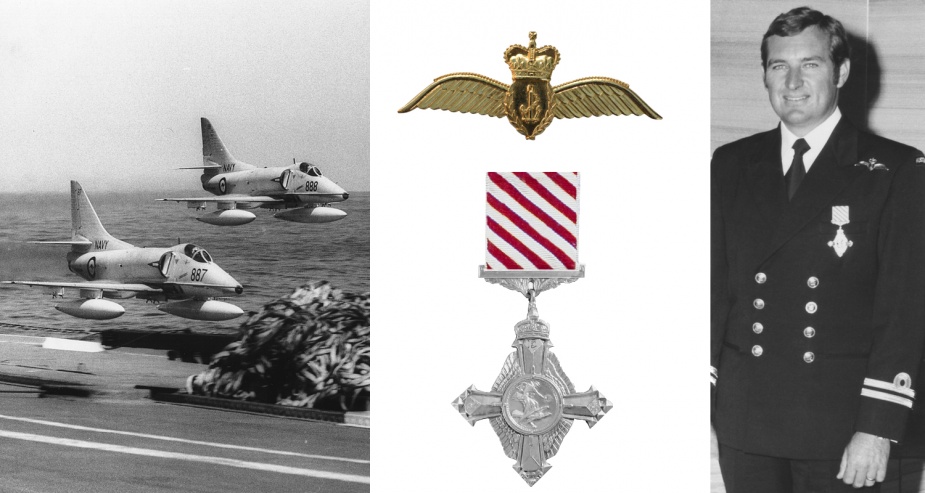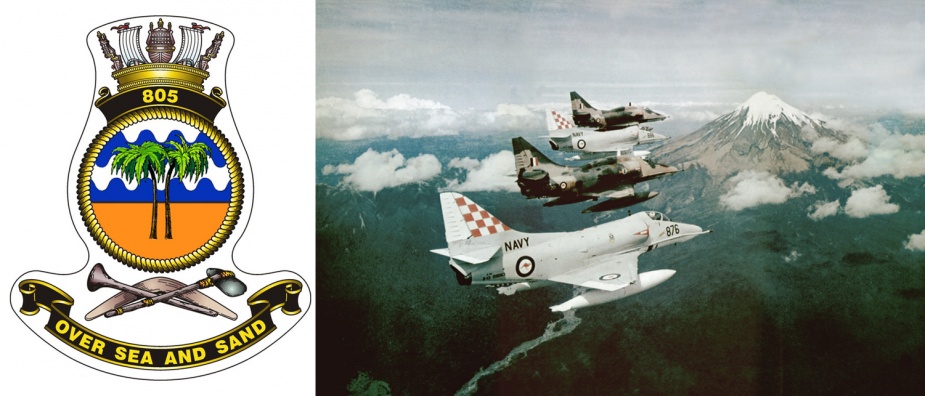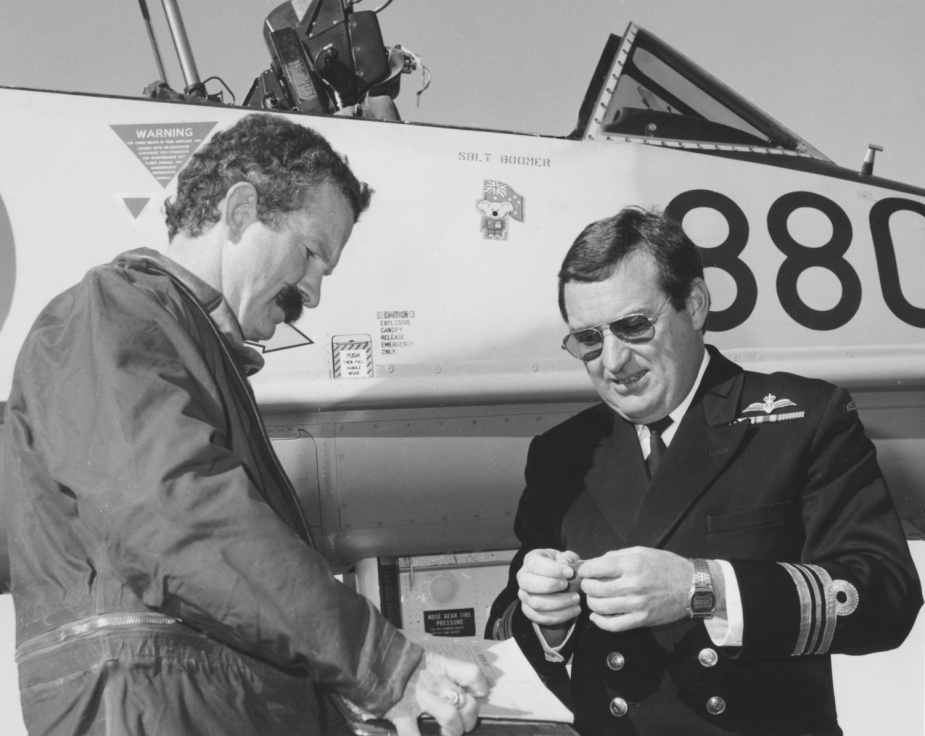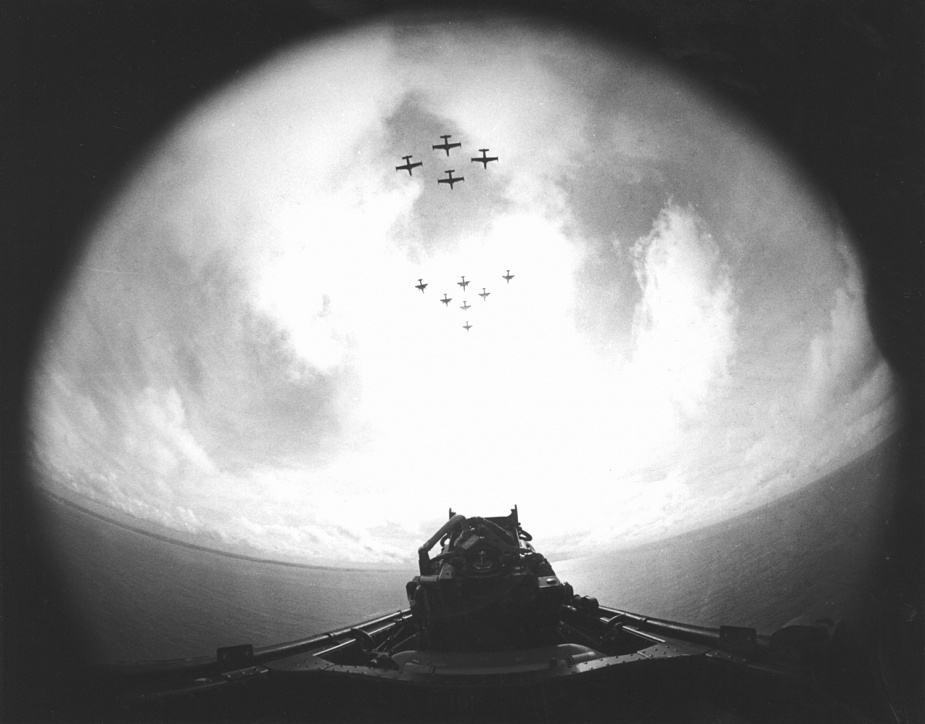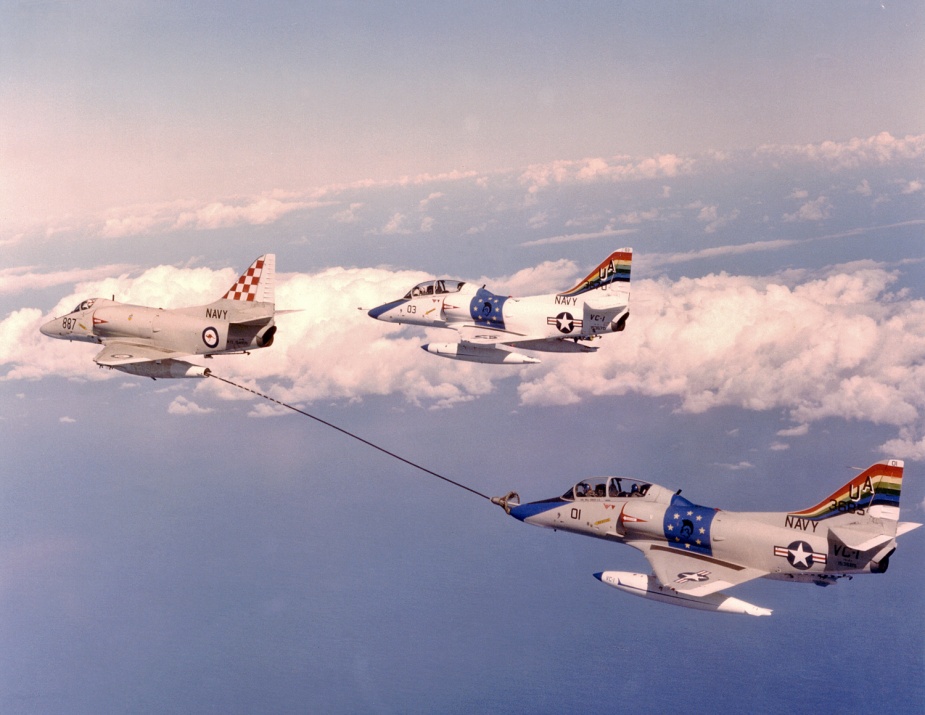Lieutenant Commander John Michael Hamilton
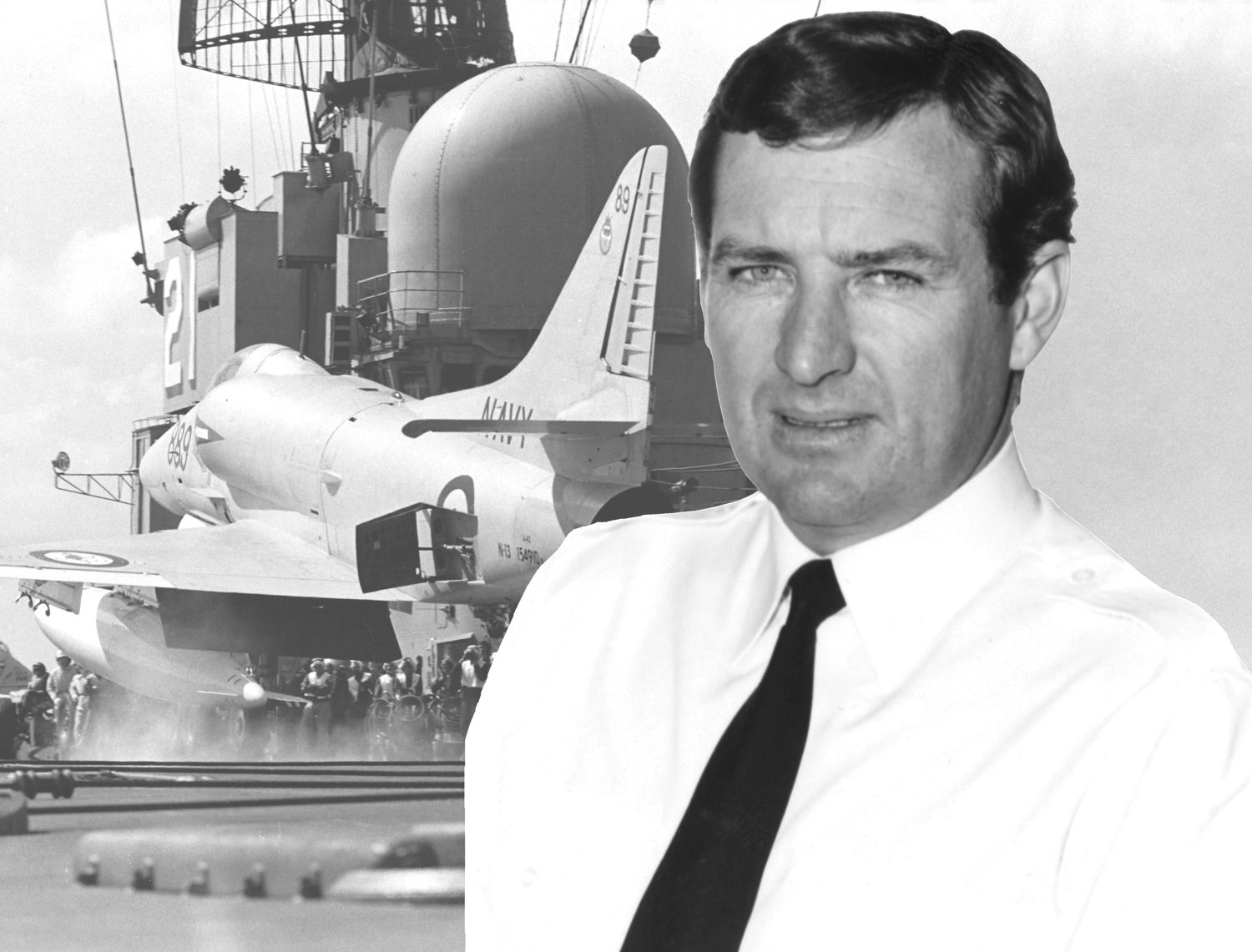
Edited by John Perryman
John Michael Hamilton was born in Sydney, one of three siblings. He completed his education at Sydney Boy’s High School in 1965, and following a year at the University of NSW, and not wishing to continue with economics and accountancy, he applied for and was accepted as a trainee pilot with the Royal Australian Navy (RAN).
In February 1967 John joined HMAS Cerberus as a Midshipman and a member of Basic Aircrew Training Course (BATC) 1/67. Following his Navy indoctrination he and five other RAN Midshipmen joined RAAF Base Point Cook, Victoria, to undertake No. 65 RAAF Pilot’s Course, learning to fly in Australian designed and manufactured CA-25 Winjeels. Following applicable ground school training their flying instruction commenced in July 1967 and continued until December.
During that time John took part in the aerial search for the then Australian Prime Minister Harold Holt who had disappeared while swimming off Portsea. His disappearance without trace was to spark many conspiracy theories, some of which endure to this day. On completion of basic pilot training the five RAN course members who attained passes proceeded to Western Australia where they learnt to fly Vampire jets between mid-January and mid-June 1968. All completed the course and were presented with their flying badges (Wings) on completion. Due to a change in promotion policy at that time they remained Midshipmen, whereas previous graduates were promoted Acting Sub Lieutenants.
On joining Naval Air Station (NAS) Nowra on 20 June 1968 the five Midshipmen pilots reported for duty with 724 Squadron. As Midshipmen they were received as somewhat of a novelty but they were soon airborne in Vampires and ably participating in Fleet Support exercises that took up the remainder of the year. During that time John’s flying was briefly interrupted when he took time off to get married.
The following year saw John briefly grounded due to a medical problem, before resuming flying and successfully completing conversion training in Sea Venoms in which he flew in support of Ikara, Delmar and banner towing trials. On 6 February 1969 John was promoted Acting Sub Lieutenant spending the remainder of the year flying Vampires and Sea Venoms in all facets of Fleet Air Arm requirements, excepting flight deck operations. The birth of a daughter, Justine, was the highlight of 1969.
On 6 February 1970 John was confirmed in the rank of Sub Lieutenant and at the same time he began conversion training to fly A4G Skyhawk fighter-bombers, an aircraft with which he was to have a close association with throughout his naval career. He successfully completed his conversion training in May, which routinely involved flying up to three different aircraft types in any given week.
Continuation training in A4s led to a posting to VF805 Squadron (Lieutenant Commander Col Patterson) undertaking workups and day deck qualifications prior to the Squadron embarking in the aircraft carrier HMAS Melbourne in October 1970. During that time the Carrier Air Group (CAG) participated in Exercise SWAN LAKE off the coast of WA prior to disembarkation to NAS Nowra in December.
The following year was spent enhancing the skills of the air and ground crews preparatory to joining Melbourne in September for sea trials and catapult trials. Cross-deck training with the Royal Navy aircraft carrier HMS Eagle, prior to embarkation, was to assist in attaining a high state of readiness. With successful flight deck trials completed VF805 Squadron embarked in Melbourne for the voyage to Hawaii to participate in the inaugural Exercise RIMPAC 1971. On arrival in the Hawaii Operational Area on 24 October, John and his aircraft were among four A4s to disembark to NAS Barbers Point. On 27 October, during an air-to-ground sortie on the Kahoolawe Range, John’s aircraft (887) suffered a malfunction forcing him to carry out an emergency wheels-up landing at Barbers Point. The aircraft suffered minor damage and was subsequently made airworthy before re-joining the carrier on 17 November.
Melbourne returned to Australian waters on 9 December, disembarking her air group to NAS Nowra that afternoon. For John, the birth of a son, Scott, was the high point of 1971.
On 24 January 1972 Melbourne’s Carrier Air Group (CAG), comprising four A4s, six S2E Tracker aircraft and eight Wessex helicopters, embarked in the Flagship to participate in SEATO Exercise SEA HAWK. During the RAN task group deployment John flew numerous sorties in A4s as well as participating in a number of mini-exercises and ‘shop-window’ flying displays during visits to the Philippines, Hong Kong, Singapore and Jakarta. On 6 April 1972 John was promoted Lieutenant before disembarking with the CAG to NAS Nowra where he took up an appointment in VC724 Squadron (Lieutenant Commander Brian Dutch) on 1 May.
By 1972 the RAN’s Sea Venom and Vampire jet aircraft had been retired and replaced with Macchi jet trainers. John was to reflect that he found them:
Nowhere near as wonderful to fly as the Sea Venom.
However, they were to prove useful in preparing trainee pilots for conversion to A4 Skyhawks.
During his time in VC724 Squadron John undertook the full range of normal squadron flying duties, with the addition of Delmar target towing and the chasing of the new Turana drones. In May 1972 John joined No. 4 Flight at RAAF Base Williamtown to train as a forward air controller (FAC) on Winjeel aircraft, before resuming his duties with VC724 Squadron in October.
1973 saw John flying in a variety of fleet support roles, assisting with Skyhawk Operational Flying School (OFS) training as well as conducting air-to-ground and air-to-air combat training that was to include the use of the Aim9B Sidewinder missile. At that time junior pilots were constantly being familiarised with fighter/ground attack procedures and techniques, and a detachment to RAAF Base Williamtown to practice air combat manoeuvring (ACM) against Mirage aircraft was to prove a great experience and one that helped to prove Skyhawk tactics.
A posting to RAAF Base East Sale in May saw John attain his Qualified Flying Instructor (QFI) rating on Macchi aircraft. He was also awarded the Stewart Trophy for the highest Flying Assessment achieved on course. Returning to VC724 (Lieutenant Commander Al Hickling (ex-RN) in August, John was again heavily involved in all facets of instructional flying including the Skyhawk training programme that saw him awarded a QFI rating on the Skyhawk by the RAAF Central Flying School. An additional responsibility included becoming the Maintenance Test Pilot for Skyhawks that saw him deliver the aircraft to Qantas (Sydney) for heavy maintenance and afterwards test flying them following re-assembly.
1974 saw command of VC724 Squadron pass to LCDR George Heron) with John continuing his duties which included basic and advanced training on Skyhawk and Macchi aircraft, instrument rating examining, assisting the Air Warfare Instructors with A4 performance flying, maintenance test flying and conducting forward air control duties. During that time Captain Andrew Robertson, RAN, the Commanding Officer of NAS Nowra, commenced Macchi familiarisation training. Had he previously completed a pilot’s course he could have gone on to fly solo.
Due to a fuel strike in NSW, the squadron successfully relocated and operated from RAAF Base East Sale, Victoria, during March/April. John was then posted to No.4 Flight RAAF Williamtown for FAC duties during Kangaroo 1, operating out of Rockhampton Airport in May and June. A reminder of the perils associated with flying fast jet aircraft was to prove the low point of 1974 when news came of the loss of Lieutenant Ralph McMillan, RAN, after the Skyhawk he was piloting crashed during a Fleet exercise mid-year. A popular member of the Fleet Air Arm he was missed by all who knew him.
Remaining with VC724 Squadron into 1975 John was upgraded to a Senior Instrument Rating Examiner by the Central Flying School, RAAF East Sale. He also carried out forward air controlling duties at Puckapunyal, Victoria, during live bombing demonstrations by Skyhawk and Mirage aircraft. A welcome change came by way of a detachment of a flight of four Skyhawks to RAAF Pearce, WA, via RAAF Edinburgh, SA, to demonstrate the operability of the aircraft. The short deployment culminated in a flypast over Perth prior to returning to HMAS Albatross. Shortly afterwards a mid-air collision between two Skyhawks over the Beecroft Range claimed the life of Acting Sub Lieutenant Malcolm McCoy in May: another sad loss felt by all. Lieutenant Commander Graeme ‘Dusty’ King managed to recover the other aircraft to HMAS Albatross.
In August 1975 John was posted to the United States for exchange duties with the US Navy’s VA125 Squadron at NAS Lemoore CA, flying A7 Corsair II aircraft. As the A7 was a single seat aircraft, all training of students was conducted both in a simulator and in a ‘chase’ aircraft. The year concluded with an intensive air-to-ground detachment to Fallon US Air Force base in Nevada which included simulated nuclear delivery training; not much use in the RAN, but an experience that John found both interesting and challenging.
1976 began with field carrier landing practice (FCLP), or Mirror Assisted Dummy Deck Landings (MADDLS) as they were known in the FAA, at NAS El Centro, New Mexico, preparatory to day/night carrier qualification on USS Lexington, CVT-16, while operating from NAS Pensacola, Florida. John then attended the USN ‘Top Gun’ Fighter Weapons School, at NAS Miramar but he was to reflect that his
A7 hardly fell into the ‘fighter’ category and provided cannon fodder during the ‘one versus many’ exercises.
On completing ‘Top Gun’ his task was to write ‘defensive tactics’ for the A7, to allow them greater survival odds in areas with no air superiority. John takes up the story:
The A7 had a very nasty habit of departing controlled flight when subjected to high angles of attack and slow airspeed. Part of the training for identifying when such a condition was about to occur was to fly the aircraft to 30,000 feet, put it into a steep and decelerating turn and watch the nose ‘diverge’ (ie. move left and right ) then pitch up and ‘tumble’, commencing a rapid rate of descent. Not a good situation at low level and usually lethal. The recommended action was to close the throttle and let everything go which allowed the aircraft to recover some 10,000 below. An interesting manoeuvre to say the least. However, no more fatalities and later aerodynamic ‘fixes’ cured this danger. At least the pilots were aware of the warning signs and could learn to fly the A7 to the boundaries of the operating envelope.
1977 saw a continuation of training tasks and bombing detachments to NAS El Centro. The Squadron policy at that time permitted the use of the aircraft for weekend ‘training’ flights resulting in a great deal of continental USA being covered during the two years of John’s posting. The final stanza of the exchange posting included his attendance at the USN Post Graduate School, Monterey, to complete a Safety Officers Course.
On completion of his exchange with the US Navy John returned to NAS Nowra and VC724 Squadron (CO LCDR David Collingridge). Having completed a refamiliarisation on the Skyhawk prior to leaving the USN, it was a seamless transition in picking up the reins and continuing with all the usual requirements. This familiar pattern of work continued into 1978 but included instructor upgrades on both Skyhawk and Macchi aircraft after which John was appointed VC724 Squadron’s Senior Pilot.
The Ramjets aerobatic team was also briefly re-formed at that time with the new CO, Lieutenant Commander Errol Kavanagh, leading and John flying in the box (No. 4). Disappointingly, however, only a few flying displays were performed due to other heavy commitments.
The 1979 New Year Honours List announced that John had been awarded an Air Force Cross (AFC) for his 'dedication and performance of flying duties'. The remainder of the year saw John join VF805 Squadron (LCDR Errol Kavanagh) and begin workups in readiness to deploy in HMAS Melbourne. He was also to assist with VC724 training and numerous maintenance test flights.
Melbourne’s workups came to a halt in June following an ejection from a Skyhawk flown by USN exchange officer, Lieutenant Kevin Finan. While landing on Melbourne, the carrier’s arresting gear failed and with insufficient flying speed available he was forced to successfully eject before being quickly recovered on board unhurt but wet.
Following repairs to the ship and successful arresting gear trials, the CAG departed for NZ in August with VF805 detaching to RNZAF Base Ohakea for exercises with RNZAF Skyhawks.
After a brief return to HMAS Albatross the CAG participated in the Kangaroo Exercise in September off Rockhampton followed by a visit to Melbourne and Hobart. The year concluded with VF805 flying to RAAF Butterworth, Malaysia for the Air Defence Exercise (ADEX), returning mid-December.
In January 1980 John was promoted Lieutenant Commander and posted as the Senior Naval Officer (SNO) to RAAF Pearce WA for instructional duties. He remained at Pearce until being posted to the RAN Tactical School in June 1981 as the Staff Officer (Maritime Strike), a posting which was to severely interrupt his love of flying. John was to later reflect that:
A visit to the Canadian Tactical School in Halifax, Nova Scotia, as a visiting lecturer on Maritime Strike, went a little (tiny) way in compensation.
Following his time at RANTACS, John joined Fleet Headquarters in 1983 as the Command Aviation Officer before returning to HMAS Albatross to assume Command of VC724 Squadron in December.
This proved a dark time for those serving in the Fleet Air Arm and in the broader Navy as the Government had made a decision not to replace the venerable aircraft carrier HMAS Melbourne and to discontinue fixed wing operations from 30 June 1984. It took great efforts on the part of the entire Squadron to maintain the integrity, safety and morale of VC724 Squadron through those melancholy months.
VC724 Squadron Detachments to RAAF Edinburgh in support of Army Rapier trials, to RAAF Amberley for joint exercises in addition to providing ongoing Fleet support services saw the conclusion of an amazing era in the history of the RAN.
The final Skyhawk aerial display for those in attendance at HMAS Albatross on 30 June saw TA4G 880 with John (the last CO 724) and Commodore John Da Costa, RAN (Ret'd) (the first Skyhawk CO) exhibit what John would term:
The magnificence of this marvellous little aircraft in RAN FAA colours.
It later fell to John to conduct maintenance test flights on all ten remaining Skyhawks before they were handed over to the RNZAF. VC 724 Squadron was decommissioned on 31 August 1984, which was to prove a very sad day for its last Commanding Officer.
A posting to HMAS Platypus as Executive Officer followed and by December 1985 John had resigned his Commission with a heavy heart and with the best of his flying days behind him.
Following his Naval service he joined the Civil Aviation Authority as an Examiner of Airmen in December 1985 and from 1986 until July 1989 carried out testing of civilian pilots for their licences on single and multi-engined light aircraft, in addition to inspecting Flying School and Commercial operations. He was also endorsed as a Check and Training pilot for Civil Aviation Authority operations.
A trip to Perth in Alan Bond’s Airship for the America’s Cup in 1986 was to prove an interesting exercise. John remarried in 1986 and continued acquiring the necessary upgrades to his civilian flying licences. Due to the reduced number of young pilots available to Qantas, the company opened its doors to pilots up to the age of 45. John joined Qantas in August 1989 for training on Boeing 747s. On completion of training at Boeing in Seattle, and Sydney, he was released to the line as a Second Officer.
So began the next sixteen years of international operations into Europe, Japan, South Africa, USA and Asia, flying the now recently retired ‘Queen of the Sky’. (July 2020)
The death of John’s daughter, Justine, in October 1990 at age 21 proved a cruel blow. Pursuing his love of flying John was to gain an Air Transport Pilot’s Licence and Command Instrument Rating, which, when space became available, made advancement to First Officer achievable. Flying, outside of Qantas requirements, was available and encouraged to maintain currency in the real world (ie. outside of the 747 simulator).
By 1992, John’s great friend from his RAN days, Errol Kavanagh (ex-CO VC724 and also with Qantas) had become involved in flying a restored and ancient Mig 15 fighter jet. John was invited to join him in flying the machine and they both flew and displayed the aircraft at the Avalon Airshow in October. Following a number of successful flights and displays the aircraft was lost as a result of an engine fire during a flight in Canberra in March 1993. With no ejection seat and the loss of flying controls from the fire, Errol and his passenger were killed, tragically just short of the runway. John continued flying with the historic aircraft group in early 1994, conducting test flights on a restored TS-11 Iskra training jet, (ex-Poland) similar to a Macchi. On completion of those flights, John withdrew from further association with such aircraft.
John’s second daughter, Claire, was born in March 1994 prior to John commencing First Officer training with Qantas in June and being cleared to the line in November. John took time out from his flying duties to welcome his new born son, Peter, in October 1995 and from then until retirement in 2005 he continued to fly as a First Officer line pilot. Regrettably he was hampered by his age from attaining his Captaincy of 747 aircraft due to his late start with Qantas.
Since retirement John has been involved with Rugby Gold Coast, working in a friend’s painting and decorating business, landscaping and travelling to and from Singapore babysitting grandchildren. Now happily ensconced in Brisbane and occasionally meeting up with old squadron mates he was to reflect that:
It is hard to believe what went before. Amen.
A Reflection:
Fighter pilots are well known for their healthy egos and in some instances, arrogance. The task for instructors was to acknowledge this trait (having a fair amount themselves) and mould it into a positive asset for the group as a whole. In the world of air combat the lone wolf ‘ace’ is a liability as success is measured against the ability of the Section (2 aircraft) or the Division (4 aircraft) to reach the target intact and achieve the aim. Fighter/Ground Attack pilots not only have to avoid those trying to stop them reaching their target, but avoid radar detection en route to the target. Single seat low level flying, particularly over the sea at night is a most hazardous occupation even when not carrying heavy ordnance. Add to that the prospect of then having to recover the aircraft on board a small carrier which left them very, very small margins for error. True aviators. Teaching trainee pilots to not only understand the limitations of themselves and their aircraft, how to operate to the very edge of the ‘envelope’ (and what to do when you get outside it) gave instructors the greatest job satisfaction imaginable; especially when one got on your tail (6 o’clock) during air combat manoeuvring.
That VC724 and VF805 generated such a record of achievement not only in Australia, but in many parts of the world, and that no lives were lost in some 15 odd years of Carrier Operations speaks volumes about all of those members of the two squadrons and the training involved.
Lieutenant Commander JM Hamilton, AFC, RAN, (Ret’d) August 2020.
The operatioins of the former RAN aircraft carrier HMAS Melbourne (II) and her Carrier Air Group may be viewed on the RAN video Sea Eagles on the following link:https://seapower.navy.gov.au/history/videos/sea-eagles.

